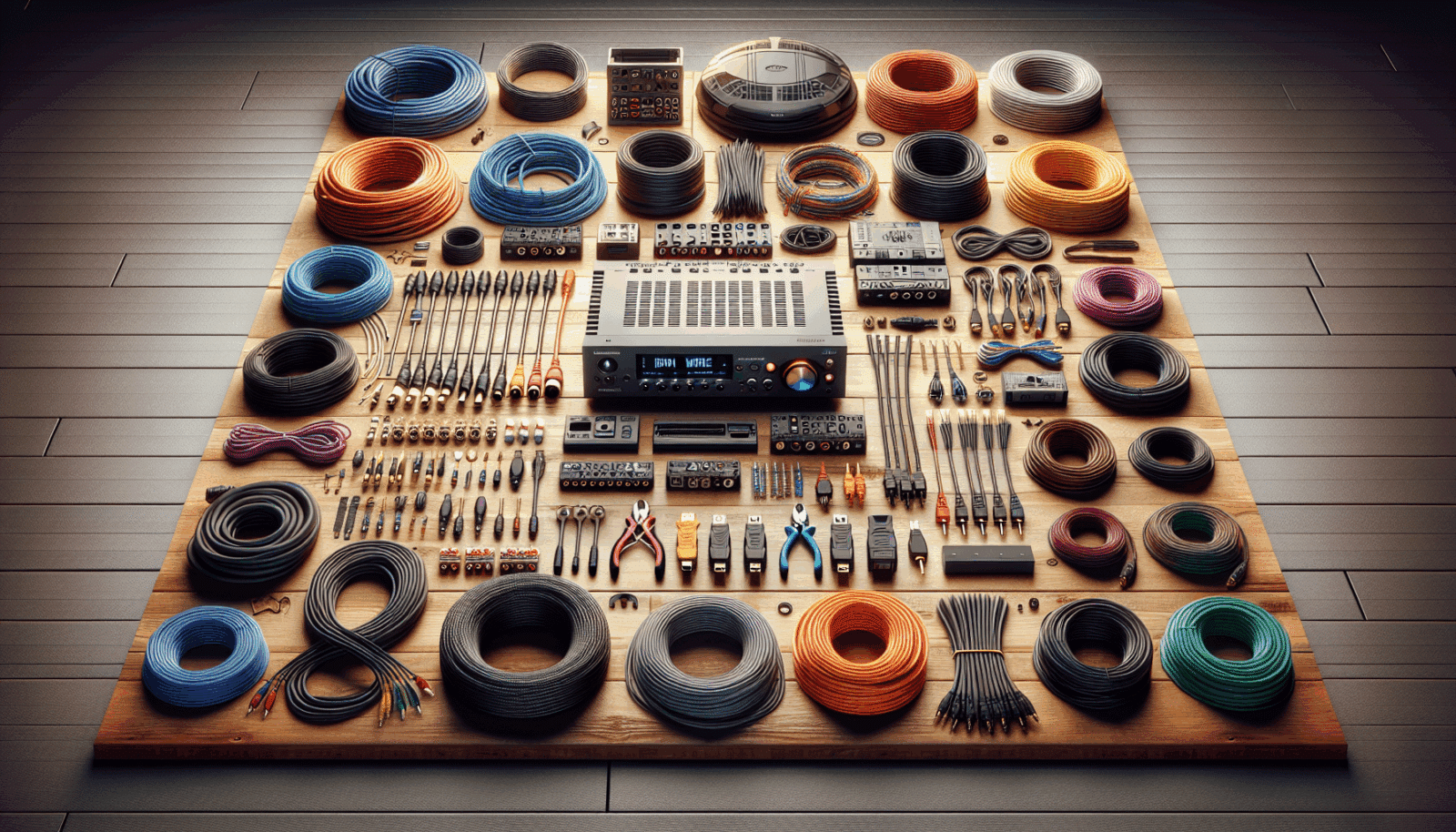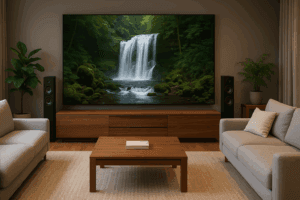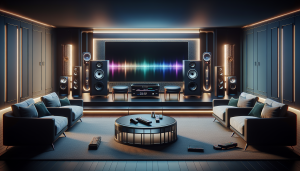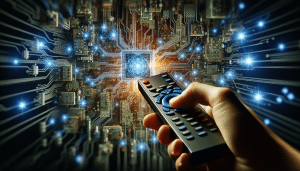Welcome to AZP Home Theaters & Automation, where we bring the immersive world of cinema directly into your home! The thrill of watching a blockbuster or playing an intense video game experience can all be punctuated by impeccable sound and sharp visuals. However, a poorly wired setup can crash that cinematic crusade faster than you can microwave popcorn. That’s why we’ve crafted this ultimate guide to home theater wiring and cabling—to help homeowners like you transform your living space into a digital haven. Follow along, and we’ll unravel the mysteries of home theater wiring, ensuring your entertainment system operates at its absolute best.
Understanding Your Home Theater Needs
Before diving into the intricacies of wiring, it’s crucial to reflect on your home theater needs. Are you focusing solely on movies, or will gaming and music be integral parts of your setup?
The choice between a simple soundbar or a full Surround Sound system, the size of your television Screen, and the number of devices you’ll connect are just some factors to consider. An upfront assessment simplifies the wiring process, minimizing future adjustments.
Whether you’re a casual viewer or a die-hard cinephile, recognizing these needs will help you decide the types of wiring and cabling essential for your system. This insight also guides you in choosing the right equipment, such as amplifiers and speakers, affecting the overall audio-visual experience.
Types of Cables and Connectors
Once you’ve identified your home theater needs, it’s time to select the appropriate cables and connectors. The choices can be overwhelming, from HDMI to optical cables, yet understanding their unique capabilities clarifies the clutter.
HDMI cables are a staple in most current setups, known for transmitting both high-definition audio and video seamlessly. Meanwhile, optical cables offer an alternative for high-quality audio connections, particularly valuable when HDMI isn’t an option.
Make sure to research each type carefully to decide which suits your system best. Bear in mind that while some cables specialize in specific functions, others may offer flexibility—useful if your equipment varies or upgrades over time.
Planning Your Cable Layout
Now that you have a grasp on the kinds of cables and connectors available, planning your layout comes next. Thoughtful cable arrangement not only heightens your home theater experience but also keeps those pesky cords under control.
Map out where each piece of your equipment will reside and how connection cables will navigate the space. Considering where outlets are placed and ensuring they are within reach can save a lot of frustration down the line.
Taking the time to sketch your layout beforehand can alleviate potential mishaps, allowing you to make adjustments as needed. This foresight helps ensure a more organized and aesthetically pleasing setup, promoting easier maintenance and fewer tripping hazards.
Essential Tools for Wiring
Imagine you’ve gathered all your equipment and cables only to realize you lack the necessary tools for installation. Let’s prevent that scenario by preparing a toolkit for home theater wiring right from the start.
A good toolkit should include wire cutters, strippers, a cable tester, a stud finder, and screwdrivers—all essential for installing and troubleshooting cables. Having these basics enables you to manage the wiring process efficiently, tackling technical challenges with ease.
Understanding the function of each tool also prepares you for snug fits, secure connections, and essential adjustments during setup. Consider investing in a high-quality toolset to ensure precision and durability, extending its utility beyond just home theater installations.
Speaker Placement and Wiring
Arguably, audio quality is just as important as a clear, crisp picture. But achieving it begins with optimal speaker placement and reliable wiring.
Your room’s shape and size can influence sound distribution, necessitating a strategic speaker layout for balanced acoustics. Consider the format of your sound system, such as whether it’s 5.1, 7.1, or Atmos, as this will dictate the number of speakers and their positioning.
When wiring, ensure connections are secure without over-tightening, which could damage terminals. Pay attention to the length and quality of your speaker wire; aim to strike a balance between efficient sound delivery and manageable cabling.
Power Supply Considerations
Power supply can often be an underrated component in designing your home theater system, but overlooking it could lead to equipment failures or hazards. So let’s dive into power essentials.
Using dedicated power outlets can decrease risks of overloading circuits while simultaneously improving performance consistency. Surge protectors are a must to safeguard against unexpected electrical spikes, extending the lifespan of your equipment.
In some cases, you may want to invest in power conditioning to clean up the electricity before it reaches your devices, preventing interference. Preparing your power setup effectively can mean the difference between seamless enjoyment and technical malfunctions.
Dealing With Cable Interference
Imagine arranging all your wires only to face annoying interference muddying your soundtrack or picture. Overcome these issues with some tried and true techniques.
Firstly, avoid running audio and video cables parallel to power cables, as this can introduce unwanted interference. Crossing them perpendicularly when necessary helps minimize the interaction.
Investing in shielded cables can prevent external electromagnetic interference, preserving signal integrity. Keep an organized arrangement of cables using clips or ties, which facilitates easy adjustments and maintaining distance where necessary.
Wireless Alternatives
While wired connections reign supreme in reliability, wireless options have gained ground with straightforward installation processes. Could they be right for your setup?
Wireless HDMI, Bluetooth-connected speakers, and Wi-Fi enabled devices can eliminate cabling headaches, offering a cleaner layout while still delivering quality. However, these options may require a robust network to avoid disruptions.
Consider supplementing your wired setup with wireless accessories, offering flexibility without compromising too much on performance. Evaluate your needs, existing network infrastructure, and willingness to troubleshoot connectivity issues before making a decision.
Safety Tips for Installation
When wiring your home theater, safety should never take a back seat. So, let’s go through essential tips to keep you protected during installation.
- Turn off power: Before starting any wiring work, ensure power is turned off at the outlet to prevent electric shock.
- Use appropriate insulation: Choosing the right insulation for cables guards against overheating and reduces fire hazards.
- Secure loose cables: Fastening cables not only maintains an organized appearance but also prevents trips and falls.
- Avoid sharp bends: Keep cables straight or allow gentle bends to prevent damage that could lead to malfunctions.
- Label everything: Clear labeling makes troubleshooting and future upgrades simpler and swifter.
Conclusion
By now, you’ve gained a well-rounded understanding of the intricacies involved in setting up a robust home theater system. Should you feel uncertain, seek guidance from professionals like us for tailored expert solutions. You can reach out by phone at 385-475-3549 or Request a Free Quote.




